There’s one thing I find more satisfying than increasing web traffic:
Stealing competitors’ traffic.
But hey, if I can offer the searcher more value then it’s fair game, right?
Over the year’s I’ve created a method in which any company can reverse engineer competitor’s most successful pages and beat them to the top spot of Google – and therefore win their traffic.
Better still, access to marketing software such as SEMrush enables you to achieve results with as little thinking as possible.
To prove this method can be applied to B2B companies, I’ll be using a small cloud-based accounting software company (for privacy reasons let’s call them companyX) as my working example.
I’ll be taking you through step-by-step how they could ‘steal’ over 1400 visitors a month from a large competitor.
Getting set-up
If you haven’t already, head over to www.semrush.com and create an account.

A limited free version is available, but I recommend purchasing at least the basic subscription. It’s a great tool I use on a daily basis, from anything to keyword research to brand monitoring.
Anyway, enough with the sales pitch.
Once you’re signed up enter the URL of the website you’re looking to acquire traffic for into the search bar.
In our case it’s: www.companyx.co.uk
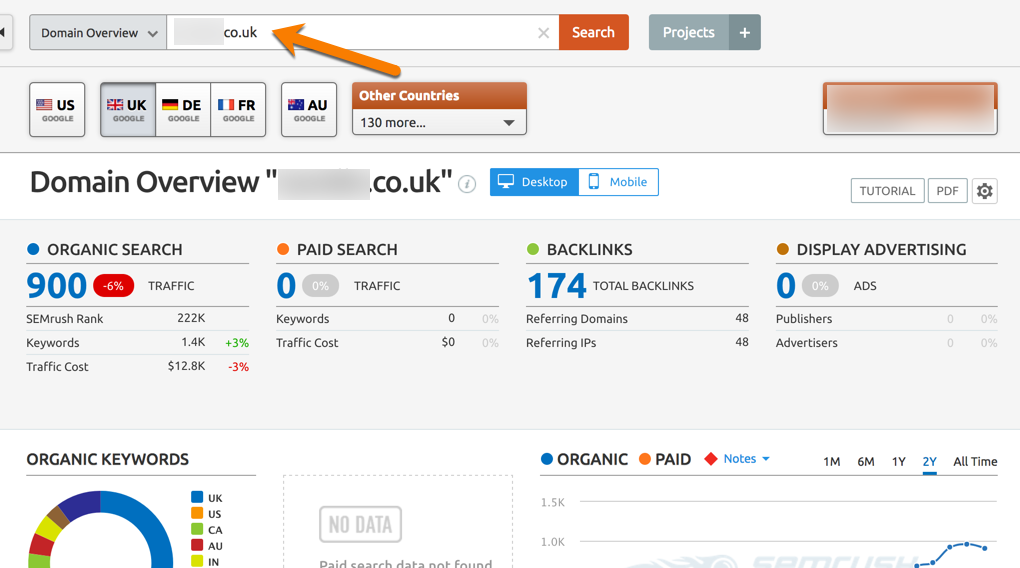
This initial page shows an overview of companyX web analytics and offers key information.
Here are a few to highlight:
- CompanyX are currently getting only 900 organic visitors a month
- They aren’t spending anything on paid ads
- They have roughly 174 backlinks pointing to their website.

This overview scratches the surface of a website audit SEMrush is capable of, but for the sake of this post it’s important to know the state companyX current organic traffic, so you can see their growth potential.
Finding competitors
Next, create a list of competitors’ sites.
You probably already have a good idea of who your competitors are. It’s worth writing these down so you can compare it to the suggested list from SEMrush.
SEMrush’s list of competitors is derived from which companies you are competing with online. More specifically, which companies are competing for the same keywords.
This list is great at highlighting competitors you didn’t know existed but pose a threat to your online success.
To find this list of competitors, navigate to organic research > competitors in the left-hand column.
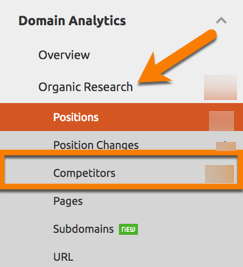
Here’s a list of companyX’s online competition, as seen by Google.
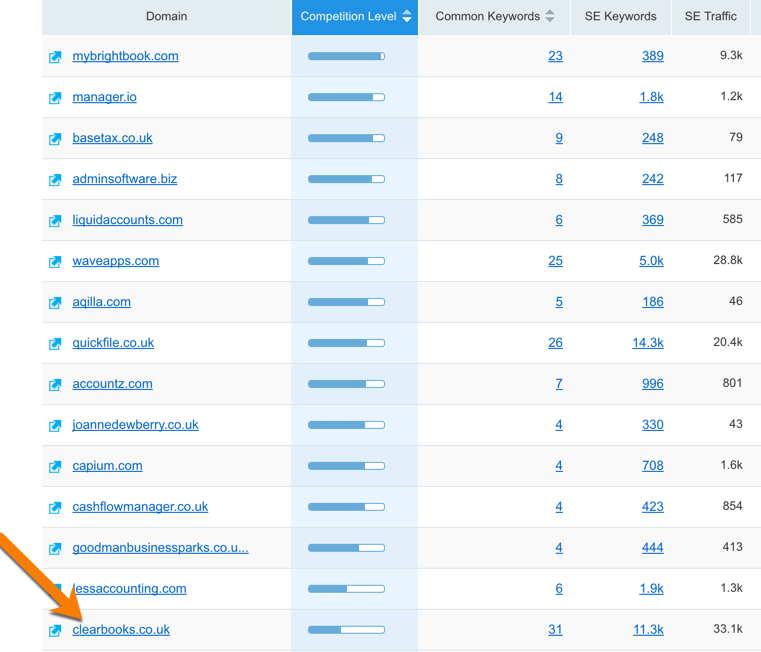
For the purpose of this post, let’s select a well known competing accounting software company you’ve probably heard of – Clearbooks.
Clearbooks competes with companyX on 31 different keywords.
The problem for companyX being, that Clearbooks drives over 33,000 organic visitors a month, while they bring in short of 1,000.
Let’s take a closer look at Clearbooks and work out how we can start stealing their traffic.
Competitor analysis
Click on the clearbooks.co.uk link and you’ll see a familiar overview screen.
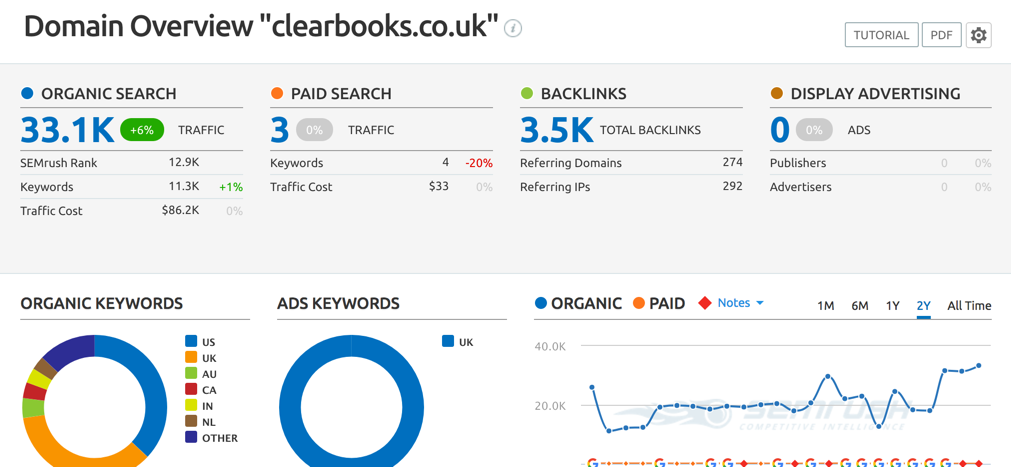
The first thing we need to do when analysing Clearbooks site is seeing which of their pages are most successful in driving traffic.
To do this navigate to organic research > pages.
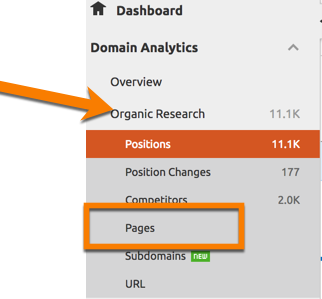
This view brings up all Clearbooks web pages which acquire the most search engine traffic.
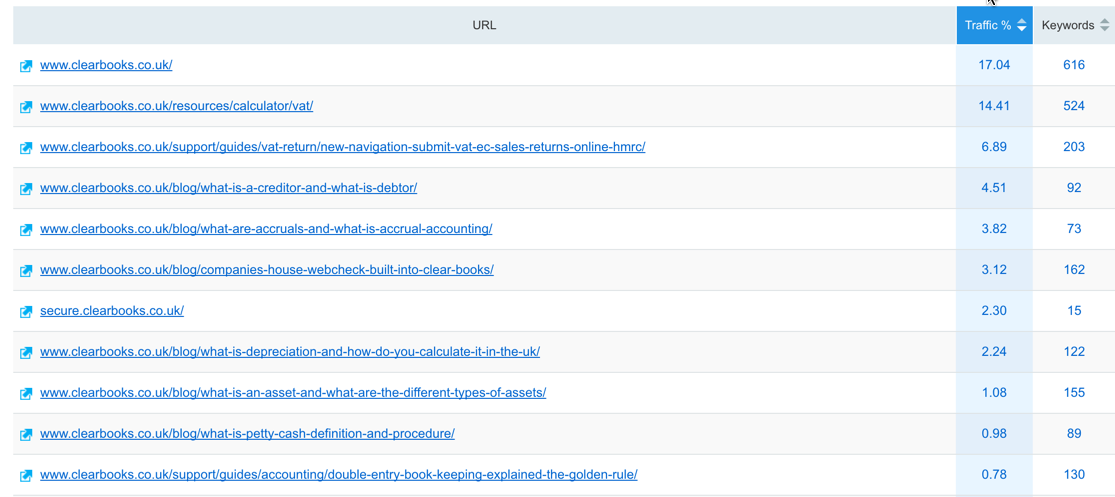
Clearbooks homepage brings in the most visitors – over 17%.
This is common for websites, due to the majority of traffic consisting of branded searches.
The important pages are the ones after the homepage. These consist of what look like blogs.
This is a perfect example of content marketing from Clearbooks.
They’ve done their research and worked out what information potential customers are searching for and created blog posts around these queries, in order to attract relevant traffic to their website.
This is good news for companyX, because if played right they can piggyback Clearbooks content success and use it to start driving their own relevant traffic.
How?
Firstly, companyX needs to select a blog page they can analyse.
For example, www.clearbook.co.uk/what-are-accruals-and-what-is-accrual-accounting – which brings in nearly 4% of Clearbooks overall organic traffic.
I don’t know much about accounting, but I assume people searching for accrual based terms are either small business owners or people working in finance. Either way, there’s a high chance a lot of this traffic is companyX’s target market.
Once the blog link is clicked, companyX will be presented with the blog page’s stats:
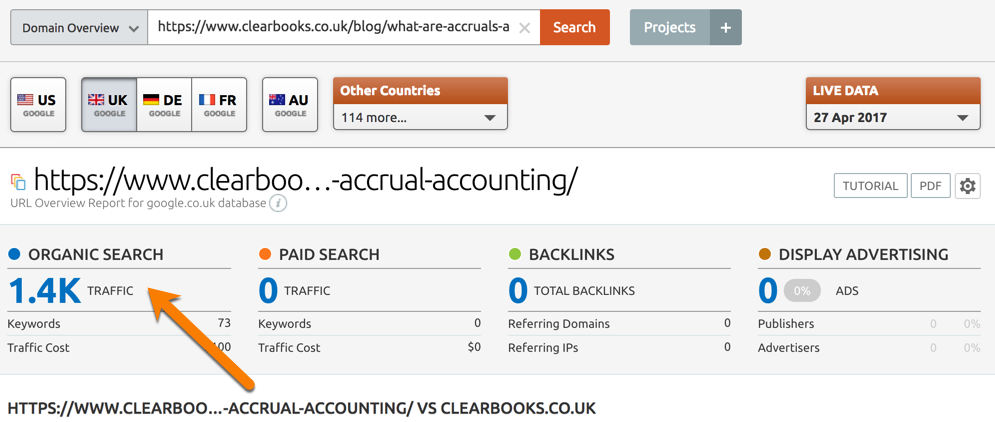
This blog post alone brings in more visitors than companyX’s whole site. Luckily, now we’ve found a relevant page that receives lots of traffic it’s time to start the stealing.
Learning from competitors successful pages.
The first step for companyX is to find out what keywords drive users to this page.
They do this by scrolling down to the keywords section and clicking on view full report.
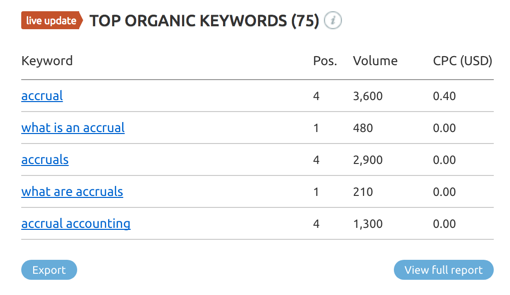
This list is made up of all the keywords and search terms that trigger Clearbooks accrual page.
CompanyX now needs to select the accrual based keywords they are going to focus their piece of content on.
For this example let’s use: ‘accrual accounting‘ as their targeted keyword.
It’s got highish search volume (1300 a month), and it’ll be easy to rank for other accrual related terms in the process.
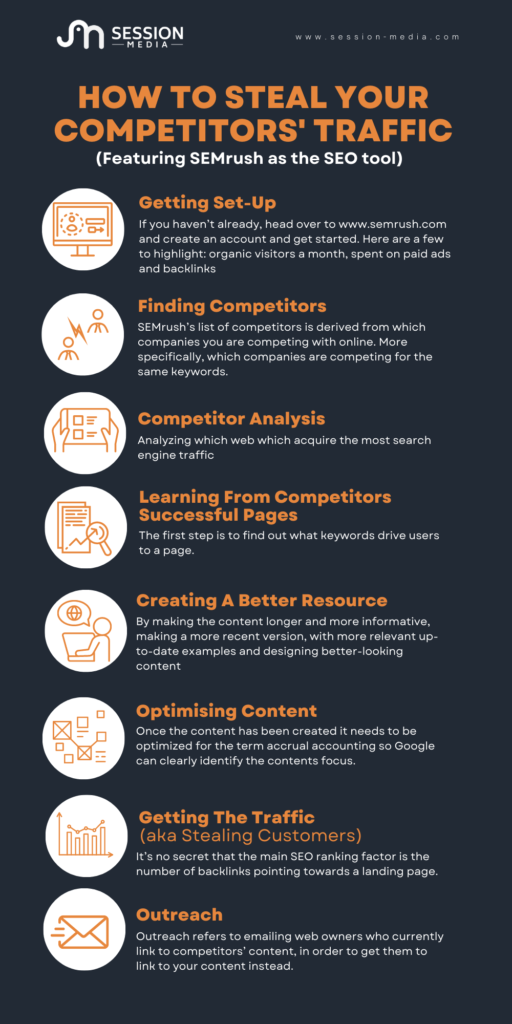
Creating a better resource
Now the hard bit starts…
Next, companyX needs to create a resource page better than Clearbooks.
Brian Dean calls this the Skyscraper Technique.
This method outlines ways your content can ‘one-up’ competitors content, by doing one of the following:
- make the content longer and more informative
- make a more recent version, with more relevant up-to-date examples
- design better-looking content
Let’s have a quick look at Cleabooks accrual post, to see how any of these apply.
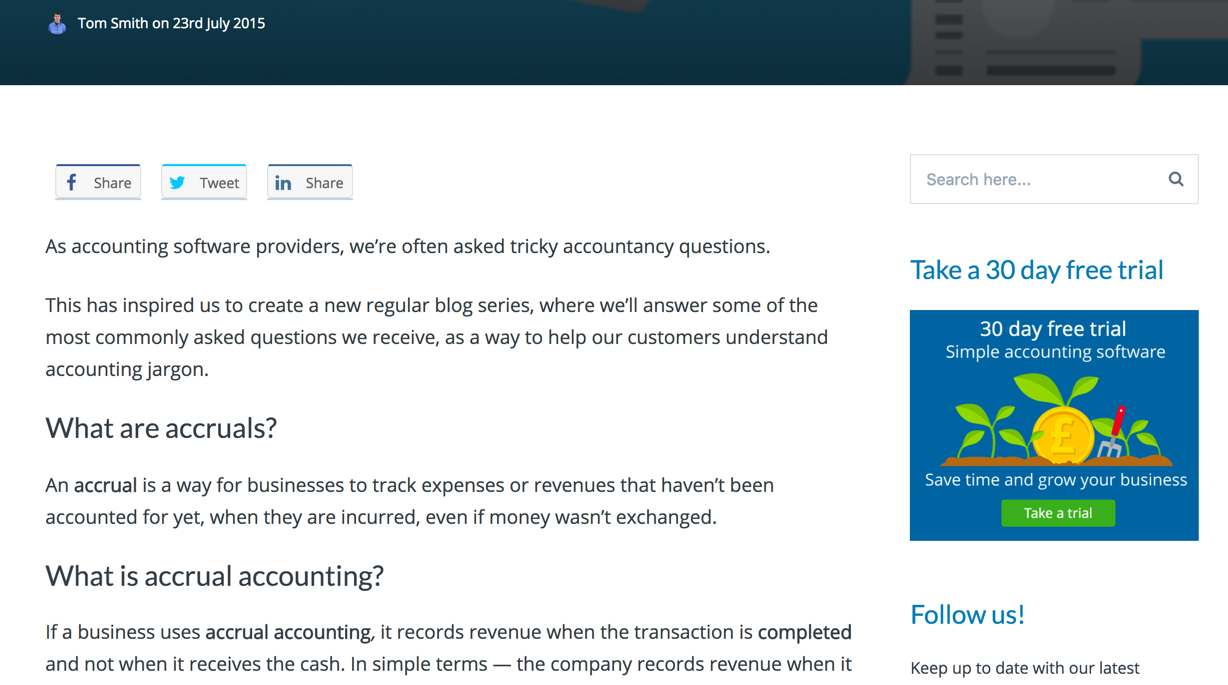
Without going into a full page audit, there are straight away a few things that can be done to create a better post.
For starters, this post was created nearly 2 years ago. Even though it’s evergreen content, there could be recent updates in the world of accrual accounting worth adding in (just a guess).
However, the bigger opportunity lies in the fact that Clearbooks post on accrual accounting isn’t as informative as it could be. I know this because I’ve looked around at other sites like Investopedia, who have a more detailed post on accrual accounting.
The best thing for companyX to do it type their target word ‘accrual accounting’ into Google and analyse the top 5 result (Clearbooks is #4), and work out how they can create a superior resource using the skyscraper technique.
Only then will they be able to create the best accrual accounting resource out there.
It becomes obvious why the resource needs to be superior in a later section.
Optimising content
Once the content has been created it needs to be optimised for the term ‘accrual accounting’ so Google can clearly identify the contents focus.
Here are a few things for companyX to consider when optimising their new page:
- relevant URL (e.g. www.companyx.co.uk/accrual-accounting)
- keyword term ‘accrual accounting’ in H1 tag
- use of keyword in first 100 words
- Keyword use and enticing Meta Description (e.g. Accrual Accounting: The Definitive Guide)
- Use of LSI keywords
You can find a more extensive guide to optimising content here: https://moz.com/learn/seo/on-page-factors
Cool!
CompanyX now has superior content which has been optimised for the term accrual accounting.
The final stage to is to ensure companyX ranks above Clearbooks in Google when user’s search for accrual accounting.
Getting the traffic (AKA stealing customers)
It’s no secret that the main SEO ranking factor is the number of backlinks pointing towards a landing page.
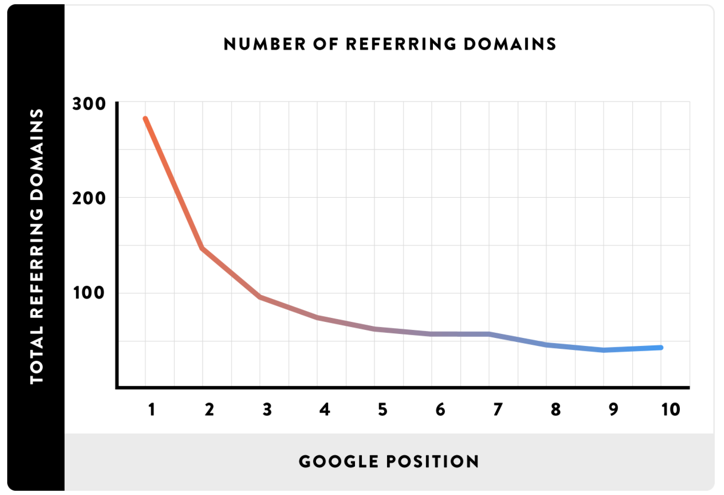
The more links companyX gets from relevant domains, the more likely they are to appear above Clearbooks on accrual accounting terms.
How can they do this?
We’ve already stolen the content idea from Clearbooks, why not steal their backlinks too?
SEMrush allows you to see which domains are linking to specific pages.
However, as you can see, Clearbooks don’t have any backlinks pointing towards this piece of content.

This is common in b2b blogs, and their high rank is probably due to high-quality on-site optimisation and domain authority.
This is good news and low hanging fruit for companyX, as they only need to acquire a few high-quality links to boost themselves above Clearbooks.
It’s time to head to ‘Google’ to see who’s backlinks companyX can steal.
Simply Type ‘accrual accounting’ into Google, select the top result and input the URL into SEMrush.
In this case, it’s a blog from Investopedia.

You can see this page from Investopedia has 148 backlinks.
Probably they reason they’re #1.
Next, navigate to organic research > backlinks > referring domains
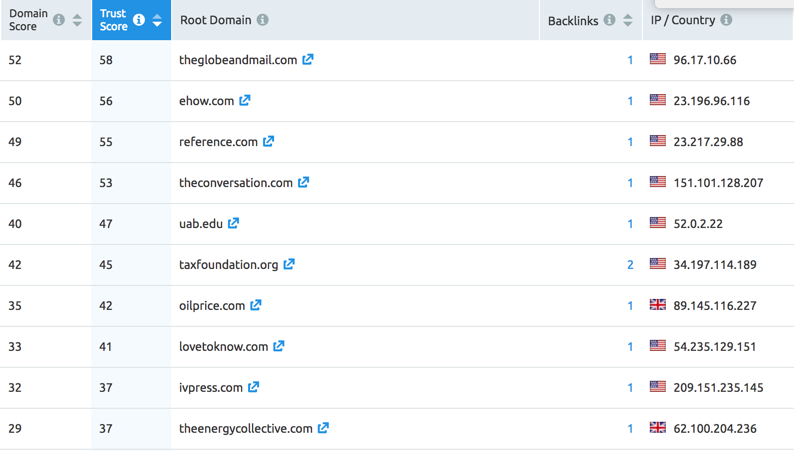
This list show’s you exactly which domains are pointing towards Investopedia’s accrual page.
Click on trust score, so you get a list of backlinks sorted from highest to lowest domain score.
(Hint – the higher the domain and trust score, the more valuable the backlink.)
In order to steal the backlinks, companyX needs to find out which page from the website is linking to Investopedia.
To do this click on the number under the backlink column:
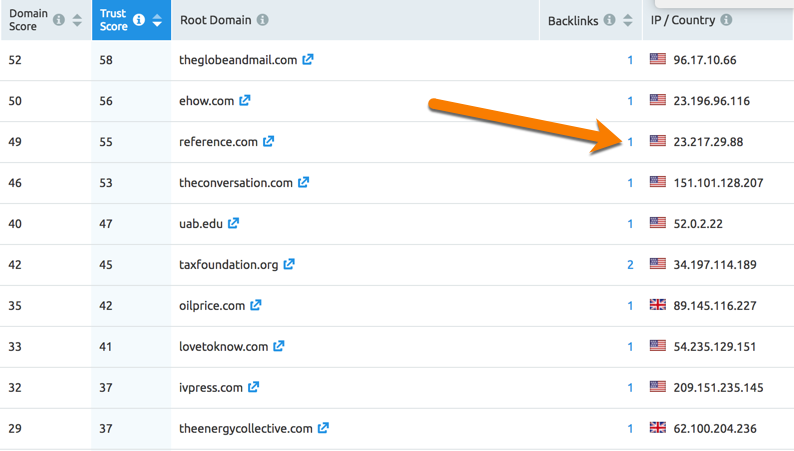
This will then bring up this view:

Under source page, we can see the exact page the link is coming from, along with the anchor text.
Great.
The final step in the process of stealing traffic is outreach.
Outreach
Outreach refers to emailing web owners who currently link to competitors content, in order to get them to link to your content instead.
Using the information above, companyX is now able to outreach to all websites currently linking to Investopedia’s accrual page, and notify them about their ‘superior content’.
This is where it becomes obvious why a superior piece of content needed to be created.
Websites are only going to make the effort to change linked content if it will provide their readers with more value.
And the only way to ensure that is by making a superior piece of content.
I know, cool, ey?
If you’re struggling to word your outreach email, Brian Dean, in the Skyscraper Technique offers some tried and tested email scripts to use when trying to steal users links, for example:
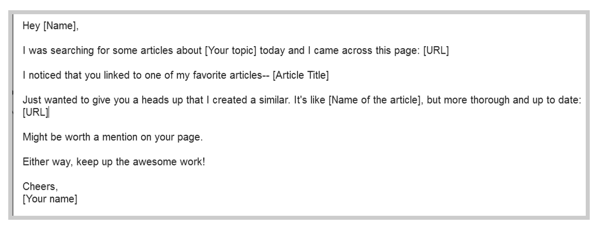
Once website owners relink to companyX’s content (and they will), that’s when they’ll appear above Clearbooks in Google and start stealing their traffic.
That’s enough to double companyX’s monthly organic traffic!
And then. once the user has visited their site, companyX can put them into a remarketing funnel to drive them towards a purchase!
Sorted.
Conclusion
In this post we’ve walked through how to:
- identify online competitors
- identify their top performing pages (and the keywords that drive users there)
- identify how to make superior content
- and, finally how to boost content above competitors – therefore, stealing their traffic.
All using SEMrush.
One final thing to note is that building backlinks in the early stages can be time-consuming. To ease your work you can use this tool – Linkio.com which can be a huge time saver and also will automate your process and give you the exact link building game plan for any target website.

